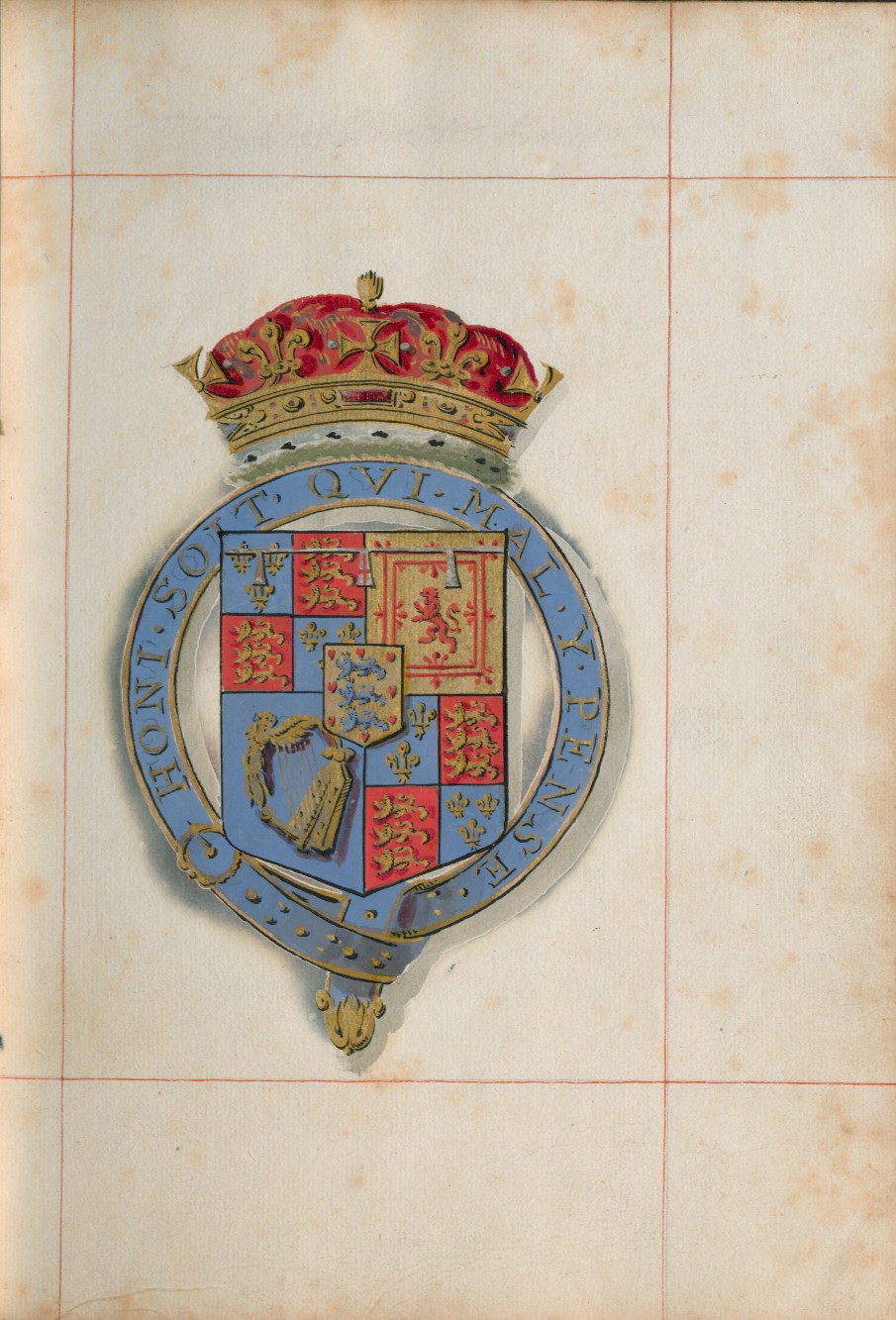This year’s Charter Day marked the 325th anniversary of the founding of The College of William & Mary by William III and Mary II, the first and (to date) only joint-monarchs in British history. An exhibition in the lobby at Swem Library brings the focus to William and Mary – the people, not the university.
The exhibition features personal letters written by each of the monarchs, a lock of Queen Mary’s hair, and a book given by William to his nephew, the Duke of Gloucester, after whom Williamsburg’s DoG Street is named. Unfortunately the young duke died before his uncle, and the book remained in the royal collection. It was given to The College of William and Mary by Queen Elizabeth II during a visit in the 1950s, serving as a potent reminder of the long connection between the university and the Crown.
 The Duke of Gloucester’s coat of arms in the manuscript of the statutes of the Order of the Garter given to William, Duke of Gloucester, by William III, and given to The College of William & Mary by HM Queen Elizabeth II
The Duke of Gloucester’s coat of arms in the manuscript of the statutes of the Order of the Garter given to William, Duke of Gloucester, by William III, and given to The College of William & Mary by HM Queen Elizabeth II
(UA Bound Volumes Collection)
Another item in the exhibition explains why William and Mary became joint monarchs. It is a broadside piece of propaganda designed to secure support for the regime. In 1688 Mary was the daughter of King James II of England, VII of Scotland, and was living in the Netherlands with her husband William, Prince of Orange. James had become king only three years before, but was the first Catholic monarch in more than a century, so his short reign over his mostly Protestant subjects was already contentious. When his second wife gave birth to a baby boy, ensuring that the next monarch would be a Catholic king instead of the Protestant Mary, the crisis became urgent. William was ‘invited’ to intervene, and in November of 1688 he landed in England with a Dutch army. James’s own army disintegrated or went over to William, and James himself fled to the Continent. And so a constitutional crisis began about what to do when the king had left the throne.
 Broadside of reasons for crowning William and Mary as joint monarchs
Broadside of reasons for crowning William and Mary as joint monarchs
(DA 460 R4 Rare Book)
Because of the preference for hereditary succession among the men in the special Parliament called to deal with this matter, the settlement had to involve Mary as James’s elder daughter. But William also wanted to be king, especially as he was about to bring England into a war with Louis XIV of France and needed the English army and navy. So it was that the two became joint monarchs–although executive power was vested in William as the husband, explained in what we would think rather sexist terms at the end of the broadside (left). This constitutional wrangling also explains why this university is named ‘William & Mary,’ although ‘The College of William’ or ‘The College of Mary’ probably wouldn’t have quite the same ring to it.
“Founders: The People Behind William & Mary” is on view in the Swem Library lobby during the month of February.